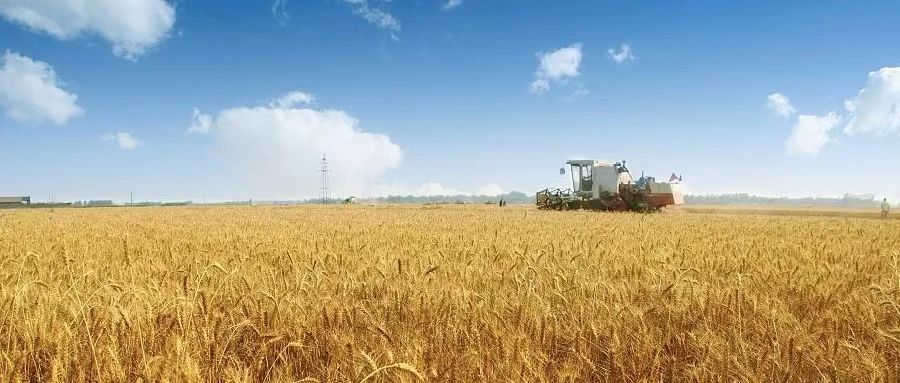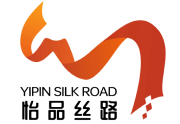
On October 23rd, the State Council Information Office held a press conference on the operation of agriculture and rural economy in the first three quarters of 2023. Zeng Yande, Chief Agronomist and Director of the Development Planning Department of the Ministry of Agriculture and Rural Affairs, stated that this year's increase in autumn grain production is a foregone conclusion, and the autumn grain area is steadily increasing.
Zeng Yande introduced the operation of agriculture and rural economy in the first three quarters. He stated that since the beginning of this year, the Ministry of Agriculture and Rural Affairs has made every effort to ensure stable production and supply, consolidate and expand the achievements of poverty alleviation, strive to broaden the channels for farmers to increase income and become prosperous, intensify efforts to summarize and promote the experience of Zhejiang's "Ten Million Project", and coordinate the promotion of rural development, construction and governance. The agricultural and rural economy has shown a stable and positive trend. Mainly manifested in the following seven aspects:
Firstly, there has been another bumper harvest of grain throughout the year, and the ability to ensure food supply has steadily improved. This year, the grain production has overcome the rare "rotten rain" in the Huang Huai region, severe floods in some areas of North and Northeast China, and local droughts in Northwest China. The yield is expected to reach a new historical high and remain above 1.3 trillion catties for nine consecutive years. Summer grain and early rice harvest have arrived. The summer grain production was 292.26 billion kilograms, slightly reduced by 2.55 billion kilograms from the previous year, still at the second highest level in history. The yield of early rice reached 56.67 billion catties, an increase of 430 million catties, and has been increasing for four consecutive years. The increase in autumn grain production has become a foregone conclusion. The area of autumn grain is steadily increasing, except for local disasters, most areas have good matching of light and water, and overall show a trend of increasing production. Consolidate the achievements of soybean oilseed expansion. The soybean area has remained stable at over 150 million mu for two consecutive years, and a strip intercropping area of 20 million mu of soybean and corn has been implemented. The area and yield of rapeseed have achieved a "double increase", and other oil crops such as peanuts and sunflower have also shown a stable production trend.
Secondly, the supply of "vegetable basket" products is sufficient, and the overall market operation is stable. Stable development of pig production. In the first three quarters, pork production was 43.01 million tons, a year-on-year increase of 3.6%. At the end of September, there were 42.4 million breeding sows in stock nationwide, with sufficient production capacity and guaranteed market supply in the later stage. The production of cattle, sheep, and poultry meat has increased comprehensively. The production of cattle, sheep, and poultry meat was 26.73 million tons, an increase of 4.4%, the production of poultry eggs was 25.52 million tons, an increase of 2.1%, the production of milk was 29.04 million tons, an increase of 7.2%, and the domestic production of aquatic products was 47.336 million tons, an increase of 4.8%. The supply of vegetables and fruits has increased. In early October, the vegetable field area in China exceeded 100 million mu, an increase of over 1.4 million mu year-on-year. The fruit production is stable and the variety is rich. Overall, the 'vegetable basket' market has sufficient supply and stable prices.
Thirdly, the classified promotion of industrial development assistance has consolidated the achievements of poverty alleviation. The monitoring and assistance measures are precise and effective. As of the end of September, 63.5% of the monitored objects in 22 provinces in central and western China have eliminated the risk of returning to poverty, and the rest have implemented assistance measures. The characteristic industries in poverty-stricken areas are steadily developing. According to the requirements of consolidating and developing a batch, upgrading and developing a batch, revitalizing a batch, and starting anew, we will guide various regions to implement precise policies and promote the development of assisted industries in a classified manner. The proportion of subsidies from the central government to promote rural revitalization for industrial development has reached 60%. The employment assistance task has been exceeded. The total number of poverty-stricken laborers (including those monitored for poverty prevention) working in the country is 32.97 million, exceeding the annual target of 2.778 million. Deepening cooperation and social assistance between the East and the West.
Fourthly, the facilities and equipment conditions continue to improve, and the construction of modern agriculture is solidly promoted. The construction of farmland protection continues to strengthen. From January to August, we completed the construction of 44.7 million mu of high standard farmland and coordinated the development of 11.61 million mu of high-efficiency water-saving irrigation. The revitalization of the seed industry has been solidly promoted. The national survey of agricultural germplasm resources has entered its final stage, and major agricultural biological breeding projects have been launched and implemented. The pilot application of genetically modified corn and soybean industrialization has achieved significant results. Breakthroughs have been made in filling gaps in agricultural machinery and equipment. The 320 horsepower continuously variable transmission tractor and electric drive precision seeder have been successfully mass-produced and applied, and products such as regenerated rice harvesters and rapeseed transplanters are basically mature.
Fifth, the cultivation and growth of rural industries for enriching the people, and the stable growth of farmers' income. The agricultural product processing industry is developing steadily. The added value of agricultural and sideline food processing industry above designated size increased by 0.4% year-on-year from January to September. In September, the Purchasing Managers' Index (PMI) of national key leading enterprises in agricultural industrialization was 62.8%, indicating increased confidence in the future. The value of agricultural functions continues to expand. Rural leisure tourism steadily recovered in the first three quarters. The online retail sales of agricultural products maintained double-digit growth. The integration of industries is steadily advancing. Build 50 national modern agricultural industrial parks, 40 advantageous characteristic industrial clusters, and 200 strong agricultural towns, enabling more farmers to achieve local employment. According to data from the National Bureau of Statistics, the per capita disposable income of rural residents in the first three quarters was 15705 yuan, with an actual increase of 7.3% after deducting price factors.
Sixth, the orderly promotion of rural construction and the continuous improvement of rural living conditions. Improvement of rural living environment. The national coverage rate of sanitary toilets in rural areas exceeds 73%, and the proportion of administrative villages that collect, transport, and dispose of household waste exceeds 90%. More than 95% of villages have carried out cleaning actions, and the appearance of villages has significantly improved. Continuous improvement of rural public infrastructure. Guide various regions to compile a list of rural construction tasks, improve the county-level rural construction project database, enhance infrastructure conditions, and improve public service levels. The efficiency of rural governance has steadily improved. The coverage of the list system, point system, and digital governance model continues to expand, and a new batch of national rural governance demonstration villages and towns have been created. Rural cultural and sports activities are flourishing, and the "Chinese Farmers' Harvest Festival" is full of excitement, with fields and fields filled with joy of harvest.
Seventh, the deepening of rural reform has further enhanced the vitality of development. The reform in key areas is steadily advancing. Expand the pilot scope of extending the second round of land contracting for another 30 years after its expiration, issue the Management Measures for Rural Land Contracting Contracts, orderly promote the standardization of rural property rights transfer transactions, and continue to deepen the pilot reform of the rural homestead system. The development and growth of new agricultural management entities. As of the end of September, there were over 2.22 million farmer cooperatives and 4 million family farms in China, respectively, and over 1.07 million agricultural socialized service organizations. The import and export of agricultural products have steadily increased. The total import and export volume reached 251.03 billion US dollars, a year-on-year increase of 1.1%. Among them, imports amounted to 178.83 billion US dollars, a year-on-year increase of 1.8%, while exports amounted to 72.2 billion US dollars, a year-on-year increase of 0.4%.
Overall, in the first three quarters, agriculture achieved another bumper harvest, farmers steadily increased their income, and rural areas remained stable and peaceful, providing strong support for promoting sustained economic recovery, accelerating the construction of a new development pattern, and focusing on promoting high-quality development. Next, the Ministry of Agriculture and Rural Affairs will, in accordance with the decisions and arrangements of the Party Central Committee and the State Council, increase its work efforts, strengthen the implementation of measures, and make every effort to complete the various tasks of agricultural and rural economic development throughout the year, stabilize the basic foundation of agriculture, consolidate the "ballast stone" of agriculture, rural areas, and farmers, and lay a solid material foundation for stable economic and social development.


 Back
Back